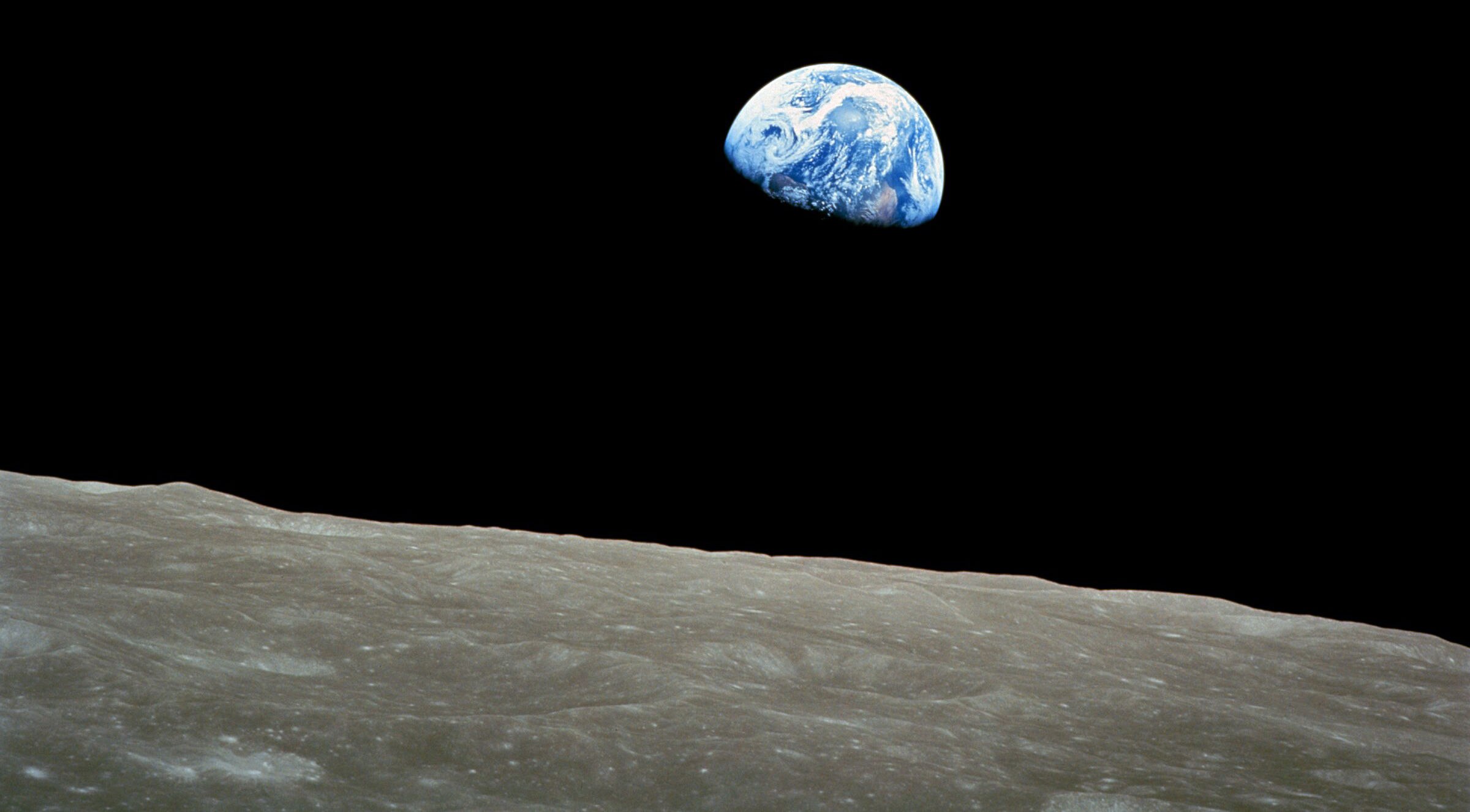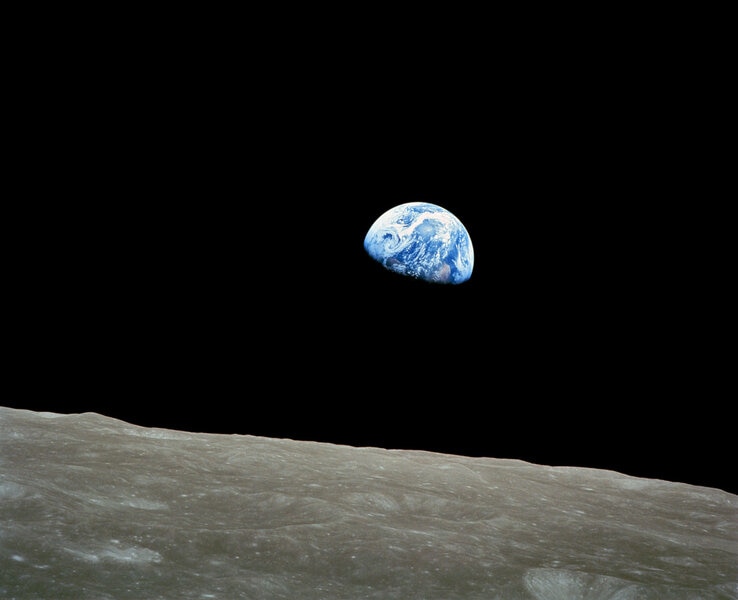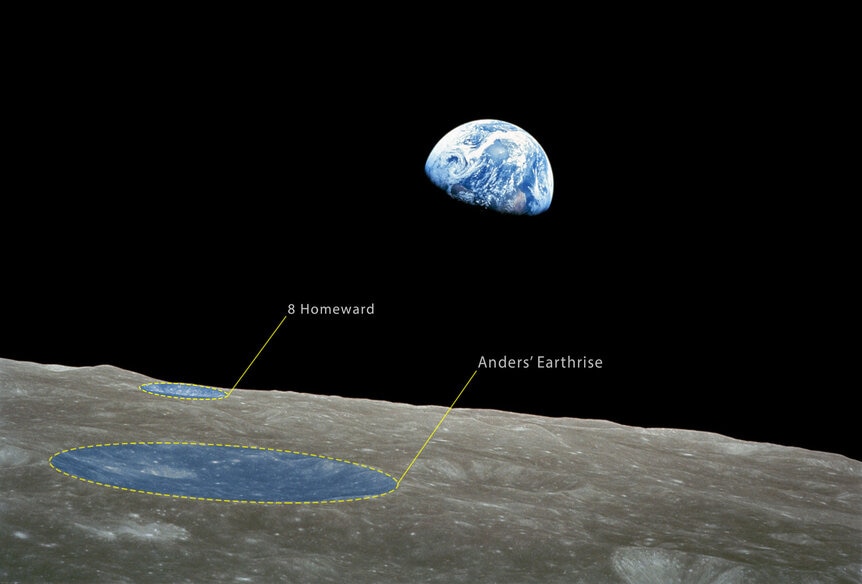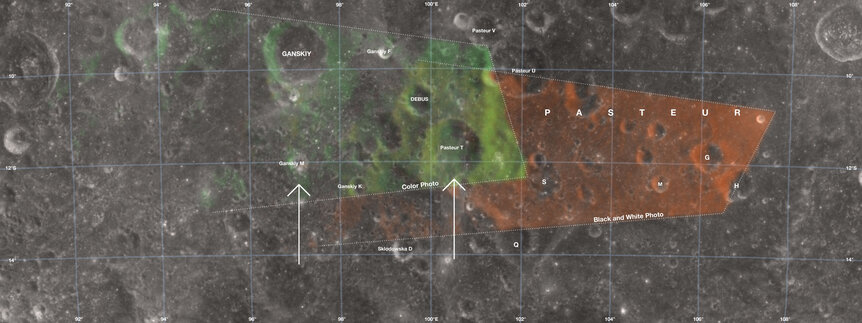Create a free profile to get unlimited access to exclusive videos, sweepstakes, and more!
Craters on the Moon named for iconic Apollo 8 ‘Earthrise’ photo

This is wonderful news: The International Astronomical Union’s Working Group for Planetary System Nomenclature — the group of astronomers tasked with giving official names to astronomical objects and features in the solar system — have approved the naming of two craters on the Moon’s far side for the iconic “Earthrise” photo taken during the Apollo 8 mission. Even better: The craters appear in the photo and are named after the Earthrise photo itself!
The incredible photograph, from December 24, 1968 — almost exactly 50 years ago now — was the first of its kind ever taken, and shows our blue-green planet rising somberly over the stark gray Moonscape as the Apollo 8 Command Module orbited from the far side of the Moon to the near side. No human had ever seen the Earth hanging in space above the Moon like that with their own eyes. The impact on our species was profound; this photograph is actually credited for starting the environmental movement.
Two of the craters seen in the photograph have now been named: The larger is now called “Ander’s Earthrise” and the smaller “8 Homeward.”
How poetic and lovely!
The craters had names before, or more accurately designations: Pasteur T for the larger and Ganskiy M for the smaller. It’s common for smaller craters on the Moon to be named after larger nearby craters using letters after the larger crater’s name to designate them. In this case, Pasteur is a very large crater 233 kilometers wide, and Pasteur T (now Ander’s Earthrise) about 40 km across; Ganskiy is about 43 km across and Ganskiy M (now 8 Homeward) 14 km wide.
Both craters are on the far side of the Moon, just barely. The Moon rotates once for every time it orbits the Earth, a dance that keeps one side forever facing the Earth — the near side — and one facing away — the far side. If you are standing on the far side of the Moon the Earth never appears in your sky, whereas if you stand on the near side it’s always in the sky.
However, the Apollo 8 capsule was in orbit, about 110 km above the lunar surface. That means they could peek around the lunar edge just a bit, seeing the Earth even while technically over the far side (and watch it rise as they moved toward it). 8 Homeward is 7° around the lunar edge as seen from Earth, and Ander’s Earthrise about 10°.
This means they can’t be seen from here on Earth. They can only be observed via spaceflight. I find this fitting.
The larger crater is named after Bill Anders, the Apollo 8 Lunar Module pilot, who took the photo. For quite some time there was a controversy over who actually took it. For years the official story was that Frank Borman took it, but Anders disputed that. It turns out Anders did indeed take it, and the story behind the confusion is actually a really great one, solved due to great detective work by space historian Andy Chaikin. I suggest you take a few minutes to read that. It’ll give you even more perspective on this epic photograph.
The folks at the NASA/Goddard Space Flight Center Scientific Visualization Studio created a phenomenal simulation of what the astronauts saw using elevation data and observations from the Lunar Reconnaissance Orbiter, and Blue Marble data to simulate the Earth (courtesy Reto Stockli (NASA/GSFC)). In this animation, the Earth rises as the astronauts orbited the Moon, and it pauses twice to juxtapose the photographs taken by Bill Anders (one in grayscale, then a second in color; the delay between them occurred due to Anders having to switch the film in the camera).
It’s funny, given today’s effortless access to information (and perhaps even the overload of it) to think that in 1968 one single photograph could have such an impact. We now see so many gorgeous and awe-inspiring images sent back from space-based observatories and probes visiting asteroids and planets and moons and comets that, ironically, their individual impact is diluted visually even as their real scientific value continuously adds to our knowledge. This is why I try to take the time to highlight special ones to you, my readers, even as I sit back and drink them in on my own before I can write about them.
This is such a remarkable time, when we are learning so much so quickly about the Universe, and learning our own context inside it. It’s important, sometimes, to remember the critical moments that showed this to us.

















